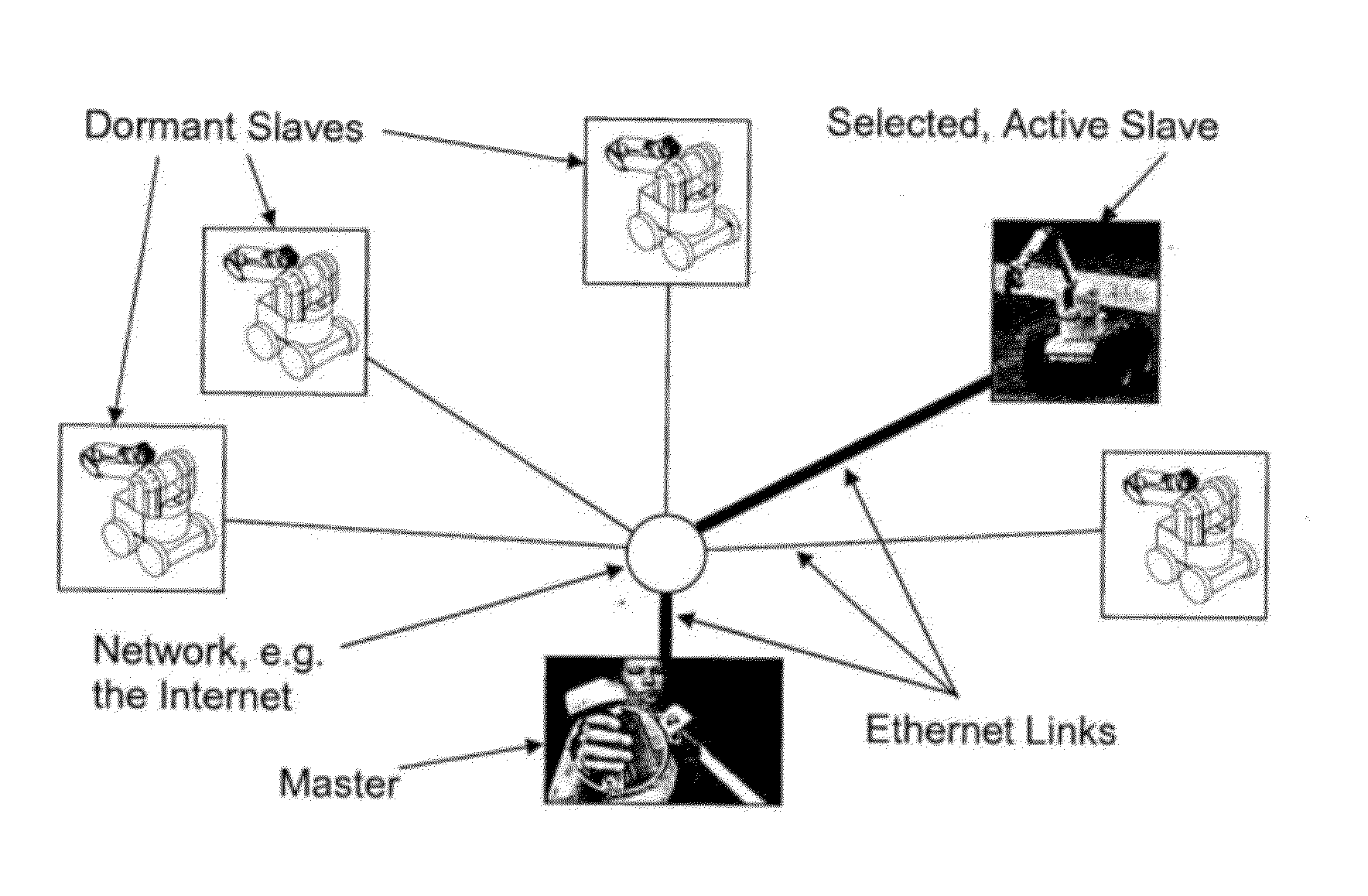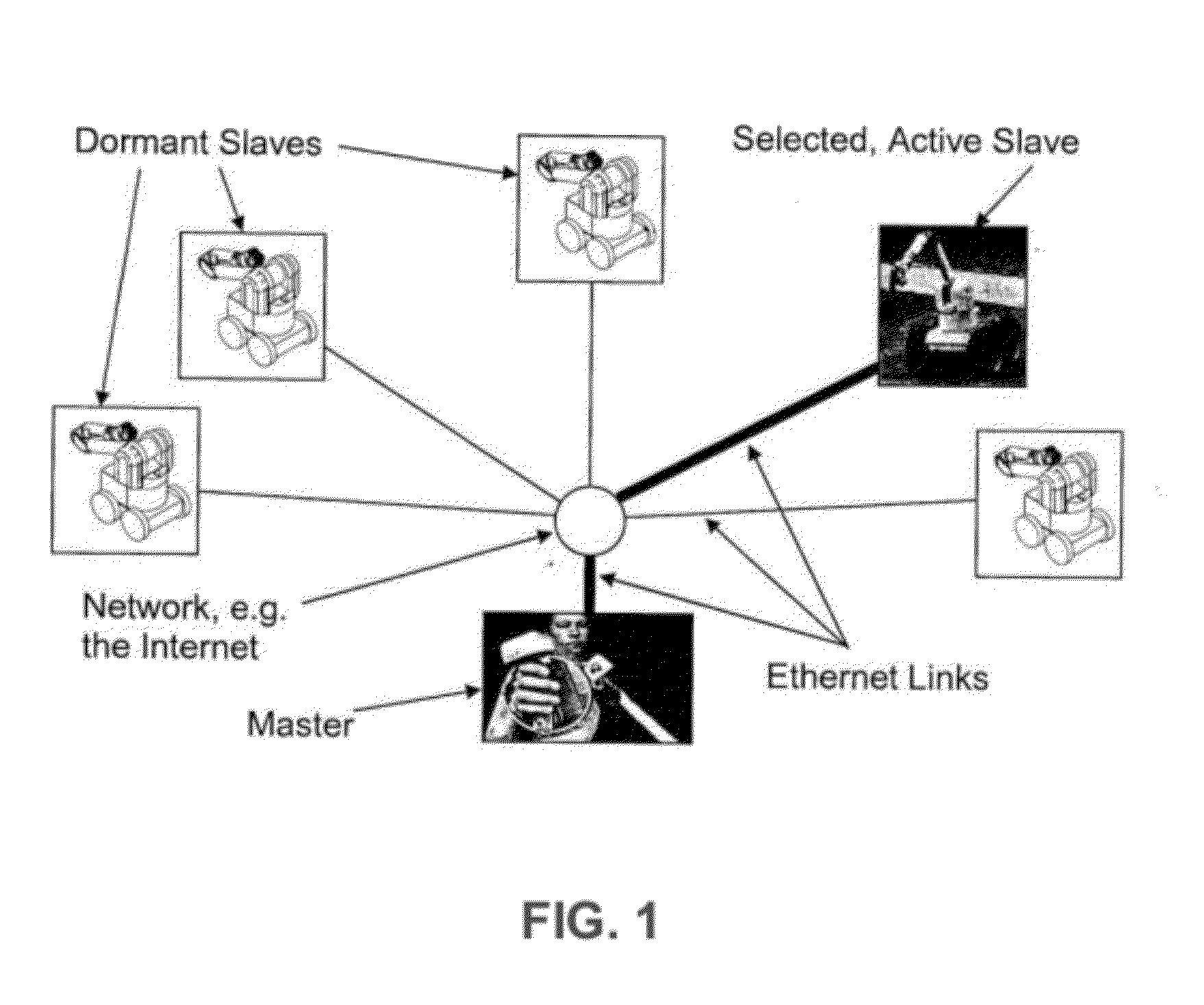Teleoperator system with master controller device and multiple remote slave devices
a technology of remote slave devices and master controllers, applied in adaptive control, computer control, instruments, etc., can solve the problems of difficult to achieve and maintain the difficulty of achieving and maintaining a high level of skill
- Summary
- Abstract
- Description
- Claims
- Application Information
AI Technical Summary
Benefits of technology
Problems solved by technology
Method used
Image
Examples
Embodiment Construction
[0026]The present invention provides a new and improved teleoperator system which addresses some or all of the foregoing problems commonly associated with existing teleoperator systems.
[0027]More particularly, the present invention provides a new and improved teleoperator system which comprises a master controller and a plurality of slave devices (e.g., remote robotic arms), wherein the master controller can operatively control each of the plurality of slave devices, but the master controller can only control one slave device at any given time. In other words, with the teleoperator system of the present invention, all of the slave devices can be controlled by the master controller, but the master controller only controls one slave device at a time.
[0028]Thus, one significant aspect of the present invention is to break the normal one-master-one-slave pairing model of the prior art. Instead a plurality of slave devices are assigned to a single master controller, with that master contr...
PUM
 Login to View More
Login to View More Abstract
Description
Claims
Application Information
 Login to View More
Login to View More - R&D
- Intellectual Property
- Life Sciences
- Materials
- Tech Scout
- Unparalleled Data Quality
- Higher Quality Content
- 60% Fewer Hallucinations
Browse by: Latest US Patents, China's latest patents, Technical Efficacy Thesaurus, Application Domain, Technology Topic, Popular Technical Reports.
© 2025 PatSnap. All rights reserved.Legal|Privacy policy|Modern Slavery Act Transparency Statement|Sitemap|About US| Contact US: help@patsnap.com


